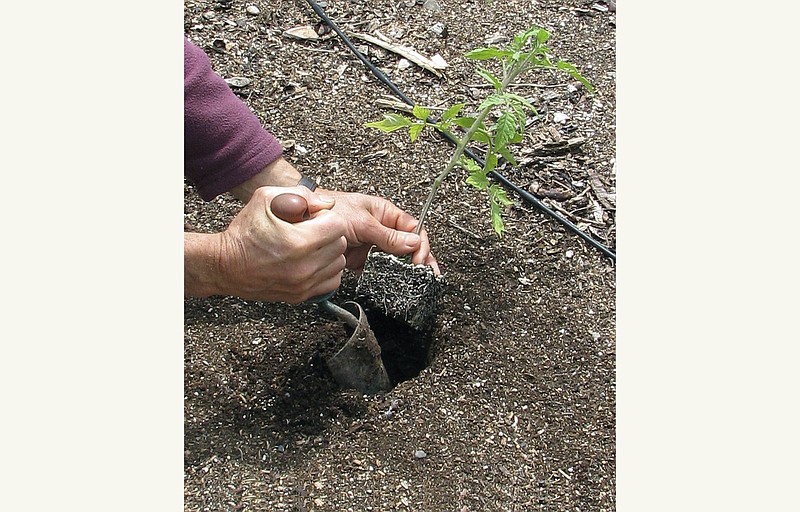Spring in the vegetable or flower garden is a carefully orchestrated series of events. The goal is to keep things moving forward with the warming season, taking into account weather predictions and, because those are just predictions, average spring warming trends where you garden.
Many gardeners use Memorial Day as a turning point in their gardening calendar. But Memorial Day weather in San Diego is very different from Memorial Day weather in Concord, New Hampshire.
A TURNING POINT
A better measure is "the average date of the last killing frost in spring" where you live. Note that this is just what it says, an average. In any year, that date might be earlier or later.
You can figure out that average date of the last killing frost online at a variety of sites where you just type in your ZIP code. Or contact your local County Cooperative Extension office for that information.
SOME LIKE IT HOT
Vegetables and annual flowers can be grouped into the cold-tender and the cold-hardy. Cold-hardy vegetables include onions, lettuce, arugula, parsley, spinach, radish, carrot, parsnip, and cabbage and its kin, such as kale, collards, Brussels sprouts and broccoli. Snapdragon, pansy, petunia, pinks and verbena are some cold-hardy, annual flowers.
Corn, winter and summer squash, tomato, pepper, eggplant, okra, melon, cucumber and bean are some popular frost-tender vegetables. Marigold, zinnia, impatiens and heliotrope are frost-tender annuals that should not be planted too early.
Vegetables and flowers can also be grouped according to whether their seeds are sown directly in the ground or, for an earlier harvest, started indoors or in a greenhouse, to be moved into the garden eventually as transplants. Some vegetables are grown both ways, as transplants for an early harvest and also seeded outdoors for harvest later in the season.
PUTTING IT ALL TOGETHER
How to relate all this to that magical "average date of the last killing frost in spring"?
First to go into the ground are seeds of cold-hardy vegetables and flowers. Generally, they might be planted as soon as the ground has thawed. Even cold-hardy seeds won't germinate well until the temperature of the top few inches is above 40 degrees Fahrenheit. Figure on planting these seeds four to six weeks before the average last frost date.
Next in the lineup are transplants of cold-hardy vegetables and flowers. Set them in the ground about three weeks before that average date of the last spring frost.
Follow this group with seeds of cold-tender vegetables and flowers, which can go into the ground about a week before the last frost date. The ground at that point retains heat to smooth out any swings in temperature, and the tender new shoots won't peek above ground for a few days, after temperatures have further settled.
Finally, time to move cold-tender transplants into the ground. Timing for this is about a week after the last spring frost date. Remember - and this is important - that the magical date is an average, so frosts can sometimes occur after that.
Frost is most threatening on cool, clear, windless nights. Be ready, when frost is predicted, to cover cold-tender plants with blankets, upturned flowerpots or anything else that can hold in heat.
Lee Reich writes regularly about gardening for The Associated Press. He has authored a number of books, including "Weedless Gardening" and "The Pruning Book." He blogs at http://www.leereich.com/blog. He can be reached at garden@leereich.com.
Closer to home
The general rule in the Chattanooga area is to plant no earlier than mid-April, but you’ll still have to pay attention to the weather, especially in higher elevations, where temperatures can be markedly cooler than in the valley.“Generally, the second week of April is fine — maybe later on the mountaintops,” says Hamilton County Extension agent Tom Stebbins.By way of caution, he recalls the Easter weekend freeze of 2007 that brought three nights of temperatures in the teens in the Chattanooga area. After unseasonably warm weather in March, an Arctic cold wave swept through the central Plains, Midwest and Southeast April 3-10. More than 1,500 weather stations across 20 states broke or matched record low temperatures, according to a report by the National Oceanic and Atmospheric Administration and the U.S. Department of Agriculture.News reports noted not just a loss of garden crops and landscaping plants but of fruits in the broader sense, such as acorns and dogwood berries.Stebbins says local gardeners should be mindful of their particular microclimate during questionable weather. The hardiness of plants can be affected by many variables, such as how “low” you live and whether particular plants are pointing toward the sun.Dee Clark, an Extension program assistant, says she considers April 15 a good rule of thumb for planting, but understands the temptation to dig sooner when those first warm days of spring beckon.“It’s hard when you go to the gardening places and see all those plants [early in the season],” she said. “If you don’t buy them, other people will, and then they’re gone. The later you wait, the harder it gets to find stuff.”— Lisa Denton
